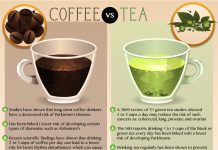Step aside, traditional dairy milk, because there’s a new barista favorite in town – foamy, sustainable oat milk! With its creamy texture and earth-friendly production process, oat milk has quickly become a beloved alternative to dairy in the coffee world. Not only does it create the perfect velvety foam for latte art enthusiasts, but it also boasts a lower carbon footprint and a host of health benefits. Join us as we explore the rise of foamy, sustainable oat milk and why it has become a go-to choice for caffeinated connoisseurs everywhere.
What is Oat Milk?
Oat Milk Definition
Oat milk is a dairy-free alternative to traditional cow’s milk, made from oats and water. It is created by blending soaked oats with water and then straining the mixture to remove any solid particles. The result is a creamy white liquid with a slightly sweet and nutty flavor. Oat milk has gained popularity in recent years as a healthier and more sustainable choice for coffee and other beverages.
Popularity among Baristas
Oat milk has become a favorite among baristas across the globe. Its unique properties make it perfect for creating lattes and cappuccinos with a rich, foamy texture. Baristas appreciate the neutral taste of oat milk, as it allows the true flavors of the coffee to shine through. Additionally, oat milk’s dairy-free and vegan status makes it a versatile choice for customers with dietary restrictions or preferences.
Why is Oat Milk a Barista Favorite?
Creamy and Foamy Texture
Oat milk’s naturally creamy consistency makes it easy to froth and steam, resulting in a luxurious foam that baristas can use to create latte art. Its ability to hold a strong and stable foam is highly valued in the coffee industry, as it enhances the overall presentation and aesthetic appeal of the beverage. Oat milk’s texture adds a velvety smoothness to espresso-based drinks, elevating the overall drinking experience.
Ability to Create Latte Art
The foaming capabilities of oat milk make it a dream for baristas who like to showcase their artistic skills through latte art. The creamy texture of the milk, when combined with expert steaming and frothing techniques, allows baristas to pour intricate designs on the surface of the coffee. Whether it’s a heart, a rosetta, or a swan, oat milk provides the perfect canvas for creating beautiful latte art that adds an extra touch of charm to a cup of coffee.
Neutral Taste
Unlike some other non-dairy milk alternatives, oat milk has a mild and neutral taste that doesn’t overpower the flavors of the coffee. This makes it an excellent choice for those who prefer their coffee to be the star of the show. Oat milk’s subtle nutty flavor pairs well with a variety of coffee profiles, complementing rather than overwhelming the taste notes. Baristas appreciate this neutrality, as it allows them to create customized coffee drinks tailored to individual preferences.
Non-dairy and Vegan Option
Oat milk’s popularity among baristas can also be attributed to its non-dairy and vegan nature. It offers a plant-based alternative to those who are lactose intolerant, allergic to dairy, or following a vegan lifestyle. As more people adopt these dietary patterns, it is crucial for baristas to have a range of milk alternatives on hand to accommodate their diverse customer base. Oat milk’s versatility makes it a go-to choice for both baristas and customers seeking a dairy-free option without compromising on taste or texture.
Sustainability Aspects of Oat Milk
Eco-friendly Production
Oat milk production is considered to be more environmentally friendly compared to dairy milk production. Oats require less water and land to grow, making them a more efficient and sustainable crop choice. They also have a lower impact on natural resources such as energy, fertilizers, and pesticides. The production process of oat milk involves minimal processing, reducing the overall carbon footprint associated with its manufacturing.
Reduced Carbon Footprint
Oat milk’s production emits significantly fewer greenhouse gases compared to dairy milk production. The livestock industry, a fundamental component of dairy farming, contributes to a substantial amount of greenhouse gas emissions. By choosing oat milk, baristas and consumers can play a part in reducing their carbon footprint and mitigating the effects of climate change. Oat milk’s lower environmental impact aligns with the growing demand for sustainable solutions across all industries.
Water Usage Compared to Dairy Milk
The production of oat milk requires considerably less water when compared to dairy milk production. Cows need substantial amounts of water for drinking, hygiene, and feed preparation. In comparison, oats are a crop that generally requires less irrigation and water consumption. Opting for oat milk as a milk alternative can contribute to water conservation efforts, which are becoming increasingly important due to global water scarcity concerns.
Health Benefits of Oat Milk
Nutritional Value
Oat milk is known for its nutritional value, as it contains various essential vitamins and minerals. It is a rich source of fiber, which aids in digestion and supports a healthy gut. Oat milk is also fortified with vitamins such as vitamin D, vitamin B12, and calcium, making it a nutrient-dense option. These vitamins are especially important for individuals who follow a vegan or plant-based diet, as they may be deficient in certain nutrients found predominantly in animal-based products.
Lactose-Free and Allergen-Friendly
One of the significant advantages of oat milk is that it is lactose-free, making it suitable for individuals with lactose intolerance. Lactose intolerance is a common condition where the body has difficulty digesting lactose, the sugar found in cow’s milk. Oat milk provides an excellent alternative for those who experience discomfort or digestive issues after consuming dairy. It is also a great option for individuals with allergies to nuts or soy, as oat milk is free from these allergens.
Heart-Healthy Properties
Oat milk contains beta-glucans, a type of soluble fiber known for its heart-healthy properties. Regular consumption of beta-glucans has been shown to reduce cholesterol levels, which is beneficial for cardiovascular health. Oat milk’s fiber content can also contribute to satiety, helping to maintain a healthy weight and promote overall well-being. Its heart-healthy benefits make oat milk an ideal choice for those looking to improve their heart health while enjoying a delicious cup of coffee.
How to Use Oat Milk in Coffee
Steaming and Frothing Process
When preparing oat milk for coffee, it is crucial to heat and froth it to achieve the desired creamy texture. Similar to other non-dairy milk alternatives, oat milk benefits from a process called steaming, where steam is injected into the milk to create a foamy texture. This can be done using a steam wand on an espresso machine or by heating the milk on the stovetop and using a frother. The steaming process helps to enhance the overall mouthfeel and creaminess of the oat milk, resulting in a velvety smooth coffee experience.
Tips for Achieving the Perfect Foam
To achieve the perfect foam with oat milk, it is important to consider a few key factors. First, make sure the oat milk is fresh and not expired, as this can affect its ability to froth properly. Secondly, ensure that the oat milk is cold, as cold milk froths better than warm milk. Lastly, be mindful of the frothing technique. For optimal results, tilt the milk pitcher slightly and keep the steam wand positioned just below the surface of the milk as it steams. With practice and experimentation, baristas can master the art of foaming oat milk to create the perfect texture for coffee.
Latte Art Techniques
Oat milk’s foamy and creamy texture makes it an ideal medium for creating latte art. Baristas can experiment with various pouring techniques and patterns to create intricate designs on the surface of the coffee. Some popular latte art techniques include pouring a rosetta, a heart, or even a swan. The key to successful latte art is a steady hand, a good pour rate, and the ability to manipulate the foam to achieve the desired patterns. With practice, baristas can impress customers with beautiful latte art using oat milk as their canvas.
Comparison with Other Non-dairy Milks
Almond Milk
Almond milk is another popular non-dairy milk alternative used in coffee. While almond milk has a slightly sweet and nutty flavor, it tends to be thinner and less creamy compared to oat milk. Its texture does not lend itself well to foaming, which can make it challenging for latte art. Almond milk can also curdle when heated, affecting the overall taste and texture of the coffee. Oat milk, on the other hand, offers a creamier and more stable foam that enhances the texture and visual appeal of coffee beverages.
Soy Milk
Soy milk is a long-standing non-dairy milk alternative frequently used in coffee. It has a creamy consistency and a slightly bean-like taste. While soy milk can produce a decent foam, it may lack the stability and thickness that oat milk provides. Soy milk is also known for its distinct flavor, which can interfere with the natural flavors of coffee. Oat milk’s neutral taste makes it a preferred choice among many baristas who want to maintain the authentic taste of the coffee while enjoying the benefits of a non-dairy milk alternative.
Coconut Milk
Coconut milk is a non-dairy milk alternative made from the flesh of coconuts. It has a rich and tropical flavor that can add a unique twist to coffee. However, its high fat content makes it challenging to create a stable foam for latte art. Coconut milk can also overpower the taste of the coffee, altering the flavor profile. Oat milk’s balance between creaminess and neutrality allows it to complement the coffee’s taste without overpowering it, making it a top choice for baristas who want to create a harmonious coffee experience.
Popular Brands of Oat Milk
Oatly
Oatly is one of the most well-known and widely available brands of oat milk. They offer a range of oat milk products, including barista edition oat milk specifically formulated for use in coffee. Oatly’s commitment to sustainability and their high-quality products have made them a popular choice among baristas and consumers alike.
Califia Farms
Califia Farms is another brand that has gained popularity for its oat milk offerings. They produce a variety of oat milk products suitable for both professional and home use. Califia Farms is known for its innovative flavors and emphasis on clean, plant-based ingredients, making their oat milk a favorite among health-conscious coffee lovers.
Rude Health
Rude Health is a brand that prides itself on using simple, natural ingredients to create wholesome food and beverage products. Their oat milk is no exception, offering a creamy and smooth texture perfect for coffee. Rude Health’s commitment to sustainable and ethical practices makes their oat milk a preferred choice for environmentally conscious baristas.
Minor Figures
Minor Figures is a brand that focuses on creating plant-based products specifically for coffee lovers. Their oat milk is specially formulated to produce a consistent and creamy foam, making it ideal for latte art. Minor Figures also prioritizes sustainability, using ethically sourced oats to ensure a high-quality product.
Silk
Silk is a well-established brand known for its range of dairy-free milk alternatives. Their oat milk is a popular choice for those looking for a creamy, non-dairy option for their coffee. Silk offers both original and barista edition oat milk varieties, providing options that cater to different tastes and preferences.
DIY Oat Milk Recipe
Ingredients
- 1 cup rolled oats
- 4 cups water
- 1-2 tablespoons sweetener (optional)
- Pinch of salt
Preparation Steps
- Place the rolled oats, water, sweetener (if desired), and a pinch of salt in a blender.
- Blend on high speed for about 30 seconds to 1 minute, or until the mixture becomes smooth and creamy.
- Pour the mixture through a fine-mesh sieve or nut milk bag into a clean container, separating the liquid from any remaining solids.
- Squeeze the sieve or nut milk bag to extract as much liquid as possible.
- Transfer the oat milk to a sealed container and refrigerate. It can be stored for up to five days.
- Before using the oat milk in coffee, shake the container well to ensure it is well mixed.
Making oat milk at home is not only cost-effective but also allows for customization based on individual preferences. The sweetness and texture can be adjusted by adding more or less sweetener and adjusting the blending time. DIY oat milk is a great option for those who prefer a homemade, preservative-free alternative to store-bought options.
The Future of Oat Milk
Increasing Popularity and Demand
Oat milk’s popularity is expected to continue growing in the coming years as more people embrace plant-based diets and seek sustainable alternatives. The rise in veganism and lactose intolerance awareness has fueled the demand for non-dairy milk alternatives, with oat milk leading the way as a top choice. The versatility, foaming capabilities, and neutral taste of oat milk make it an appealing option for baristas and coffee enthusiasts alike.
Expanding Market Presence
As oat milk gains traction in the coffee industry, an increasing number of cafes and coffee shops are incorporating it into their menu offerings. Its presence is extending beyond specialty coffee shops, reaching mainstream coffee chains and even home kitchens. The accessibility and availability of oat milk are expected to continue expanding as consumers seek out an alternative to traditional dairy milk.
Innovation and Product Development
With the growing demand for oat milk, the market is ripe for innovation and product development. Baristas can look forward to new variations of oat milk with different characteristics tailored specifically for coffee applications. Possible advancements include improved foam stability, enhanced sweetness, and flavor profiles that pair perfectly with specific types of coffee. As the oat milk industry evolves, baristas will have even more options to elevate their coffee creations.
Conclusion
Oat milk has become a barista favorite for several compelling reasons. Its foamy and creamy texture, ability to create latte art, neutral taste, and non-dairy, vegan attributes make it a versatile choice for coffee enthusiasts. Oat milk’s sustainability aspects, such as eco-friendly production, reduced carbon footprint, and lower water usage compared to dairy milk, contribute to its appeal. Additionally, oat milk offers health benefits with its nutritional value, lactose-free nature, and heart-healthy properties. Baristas can easily incorporate oat milk into their coffee creations by following the steaming and frothing process, employing latte art techniques, and experimenting with recipes. Compared to other non-dairy milks like almond milk, soy milk, and coconut milk, oat milk stands out for its creaminess, stability, and ability to complement the coffee’s flavor. Several popular brands of oat milk, including Oatly, Califia Farms, Rude Health, Minor Figures, and Silk, provide high-quality options for baristas and consumers. For those who prefer a DIY approach, making oat milk at home is simple and customizable. As the future of oat milk looks promising, its increasing popularity, expanding market presence, and potential for innovation and product development make it an exciting time for baristas and coffee lovers alike. So why not join the oat milk trend and experience the foamy, sustainable delight it brings to your next cup of coffee?

































